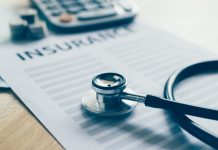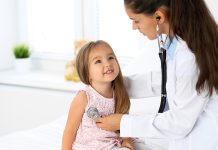Hands up if you’re trying to get your finances together and eat more nutritious foods for 2020 (✋🏽). Same, same. Clients tell me all the time that one of the biggest barriers to eating healthier is money. This is especially true for people living in areas without decent access to fresh produce. There’s this misconception that you have to buy everything fresh, local, organic, and non-GMO to make balanced meals. Totally not the case. There are lots of delicious, satisfying foods that are packed with nutrients and help your money go a long way, and they’re all pretty abundantly available. Here are seven foods that cost less than 40 cents per serving, which makes it much easier to keep them around, enabling you to prepare delicious meals any time.
To arrive at the costs per serving you see below, I found the cost of each product at three different supermarkets and then used the average.
Eggs
I mean, this has got to be one of my favorite foods of all time. Eggs are incredibly flexible in the kitchen and contain a powerhouse of nutrients. One large egg has a ton of vitamins and minerals and high-quality protein. For those of you thinking egg whites are the healthier way to go, let’s back up a bit. While egg whites contain some of the eggs’ high-quality protein, riboflavin and selenium, the majority of an egg’s nutrients are found in the yolk. One of the reasons eggs are cost-effective is because they store really well. Eggs can keep for up to five weeks beyond the pack date or three weeks after purchase. You can go the obvious route and make omelets, scrambles, or frittatas, or you can get creative and make shakshuka, egg fried rice, or egg muffins. Here is one of my favorite egg recipes that I incorporate often into meal prep for the week.
Black beans
Okay, I know I said eggs were my favorite food, but beans are up there as well. There are so many varieties, and similar to eggs, there are so many things you can create in the kitchen with them. Beans have high levels of protein and fiber, and also contain important nutrients like iron, potassium, and folate. One cup of cooked black beans provides about half the amount of fiber you need for the entire day! By adding more beans to your plate, you’ll be getting both soluble and insoluble fiber, which can help with blood sugar regulation, digestion, and regularity. If you want to save a few extra coins, you can buy dry beans, cook in bulk, and then freeze in small batches so you can thaw and use when you’re ready to enjoy. However, canned beans are a nutritious option that is much easier to prepare. For those of you who are gas-ridden after eating beans, try either rinsing canned beans really well before cooking or soaking dry beans overnight and then rinsing before cooking. Whether you toss them in a salad, make a chili, or enjoy them for breakfast, beans are a great way to make the dollar stretch!
Rolled oats
What’s better than a warm bowl of oats during these cold winter mornings? A strong and growing body of science supports that eating oats as part of a heart healthy diet may help reduce risk factors for heart disease. Oats are one of the most convenient sources of fiber and provide the soluble fiber beta-glucan, which may help to lower cholesterol levels and reduce the risk for heart disease. Oats are also a 100% whole grain and a good source of fiber, which helps to support digestive health. Aside from enjoying oats as oatmeal, you can get creative and make oatmeal banana bread, savory steel cut oats, or oat pancakes! The great thing about oats is that, similar to beans, they can be stored for extended periods of time. If you keep your oats in an airtight container in a cool, dry storage place, they should keep for up to 12 months!
Brown rice
While we’re on the topic of whole grains, brown rice is another nutritious, budget-friendly food to add to the pantry. Brown rice contains the bran and the germ, which means that it retains more nutrients when compared to white rice, from which the bran and germ are stripped in the refining process. Brown rice is an excellent source of manganese and a good source of selenium, phosphorus, copper, magnesium, and niacin. If you’re not into the super-chewy taste of brown rice, consider cooking it with white rice (I do a one-to-one ratio) for a less fibrous alternative. I love cooking large batches of brown rice, and then freezing it in small containers so there’s always rice ready whenever I need a quick side to go with my meal. Below is one of my favorite ways to enjoy!
Canned tuna
When we think of seafood, we usually think $$$. However, canned tuna is a convenient and affordable way to add seafood to your diet. It’s a good source of essential nutrients, such as omega-3 fatty acids, high-quality protein, selenium, and vitamin D. The canning process creates a convenient, nutritious product with a long shelf life that is a good source of protein and other nutrients. If you’re wondering whether tuna in oil or water is better, they both have their benefits, so go with whatever you enjoy most! I love adding tuna to sandwiches, salads, and flatbreads. Below is a fun way to prepare it with avocado!
Frozen mixed vegetables
If there’s one thing you should always keep in the freezer, it’s a bag of frozen vegetables. Something I hear often from people trying to eat more vegetables is that they want to, but the vegetables are always going bad in the fridge. Frozen vegetables are an affordable and easy way to add more vegetables to your plate.They have a long shelf life, some lasting for up to a year! There’s a myth that frozen is not as nutritious as fresh. Frozen vegetables (and fruits) are frozen at peak freshness and, because of this, may have even more nutrients than their fresh counterparts. During the winter months it’s especially hard to get an affordable variety of vegetables because so many foods are out of season. Go for frozen! Note, the larger bags of frozen vegetables tend to be more affordable per serving. The recipe above for the Turmeric Vegetable Fried Rice is actually made with frozen vegetables, along with the Vegetable Quinoa Fried Rice below!
White russet potatoes
The last (and, quite possibly, the most delicious) food we’ll cover is potatoes. If you’re wondering, Wait, does she mean sweet potatoes? I’m referring to all potatoes. Both sweet and white potatoes provide similar amounts of key nutrients including protein, potassium, and vitamin B6, all of which contribute to a well-balanced, nutrient-dense diet. Potatoes are more energy packed than any other popular vegetable and have even more potassium than a banana! They can last several weeks and pair well with pretty much everything. My favorite way is mashed potatoes (obvi), but I also love to enjoy them fried, roasted, and stewed.

























